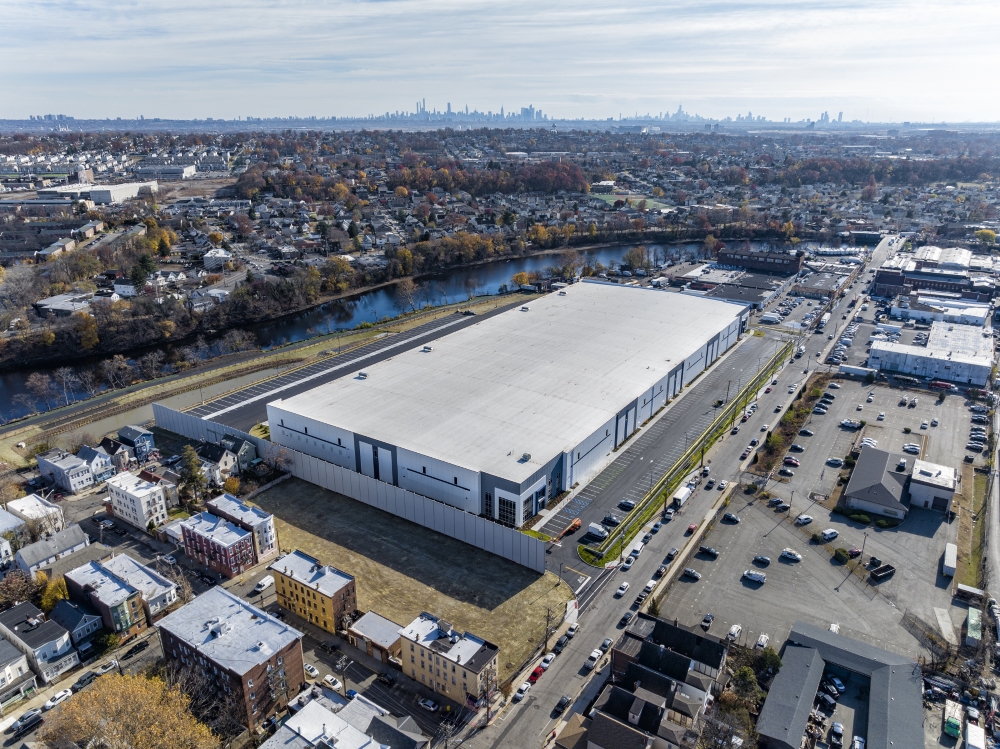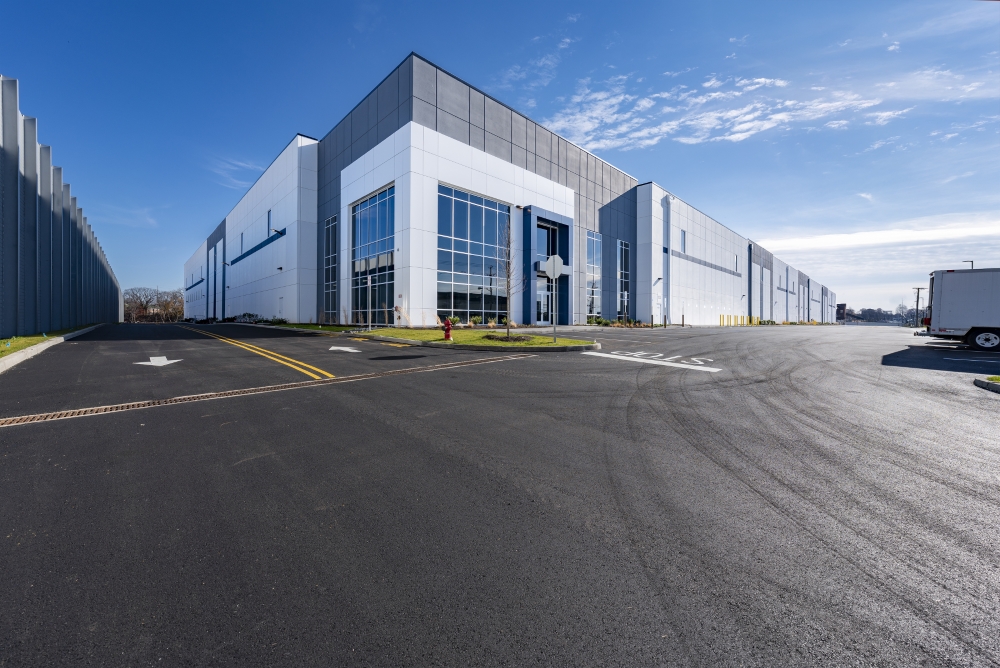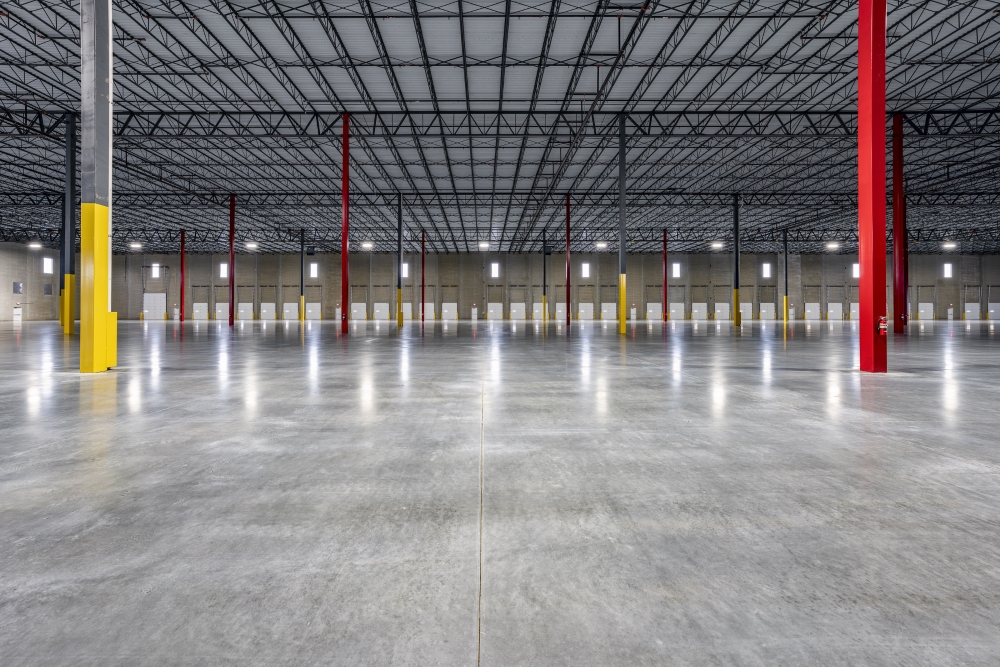
All images courtesy of Stonemont
A Look at How an Old New Jersey Industrial Site Found a Second Life
By Brian Danahy, Stonemont Financial Group
In one of the Northeast’s most complex industrial environments, Stonemont Financial Group has transformed a long-vacant, contaminated site in Passaic, New Jersey, into a modern logistics hub. This achievement is a testament to strategic remediation and community-focused redevelopment, proving that specific expertise in local government regulations and requirements can lead to a successful turnaround for an otherwise unusable property.
The site, now home to the 300,000-sq.-ft. Passaic Logistics Center, was a significant challenge from the outset. Acquired for $60 million, the land bore the scars of decades of industrial activity. The project was faced with environmental hurdles, including impacted soils and groundwater and the threat of vapor intrusion. Yet, in just 12 months, Stonemont not only conducted a multi-million-dollar environmental remediation effort but also delivered the development on time and within terms — a rare feat for a brownfield project of this magnitude.
Navigating New Jersey’s Environmental Maze
The property’s past involved a variety of light-to-heavy industrial uses, leaving behind a plethora of environmental challenges. As with many sites near New Jersey’s industrial core, the land had sat dormant for years, seen by the local community as an eyesore. Stonemont’s decision to take on the environmental and development challenges marked a significant turning point for this dejected property.Unlike more traditional brownfields programs in other states that often include grant incentives, New Jersey’s contaminated site remediation process is managed within the New Jersey Department of Environmental Protection (NJDEP) framework. Stonemont worked with the Licensed Site Remediation Professional (LSRP), a specially licensed consultant, to assess, strategize and execute a remediation plan under the Industrial Site Recovery Act (ISRA). This collaboration allowed Stonemont to implement cleanup while maintaining progress on the project.

The complexity of this site was also compounded by evolving regulations. During the course of the project, new environmental standards and constituents of concern emerged, requiring the team to pivot and adapt mid-development. Contaminant profiles and regulatory standards are constantly changing, so it’s imperative to stay ahead of any changes and adjust strategies accordingly.
When working with contaminated sites that will need significant remediation work, early coordination is important. It’s also important to keep each party up to date on each step of the process, making sure that everyone understands what the other teams are doing and what role they play within the various layers of regulatory oversight. Throughout the project, Stonemont maintained consistent communication with multiple regulatory bodies, including the NJDEP, the U.S. Environmental Protection Agency and the local jurisdiction. Coordinating among these various entities required careful planning and transparency but ultimately helped streamline the remediation and development process.
Above all, local regulators are mostly concerned with community members coming into contact with impacted soil. Keeping safety at the forefront when going through the tedious layers of remediation is vital to ensuring that each component is completed at the highest quality.
Smart Strategies: Doing What’s Best for Your Budget
There are typically two ways to address impacted soil on an industrial site: Dig it out and take it offsite to a landfill or cap the property. For this project, digging out and hauling away all contaminated materials, particularly on a site of this scale, was not feasible from a budgetary or logistical standpoint.
Instead, Stonemont and its engineering team implemented a multifaceted solution. A physical “cap” composed of the new buildings and paved areas like driveways was constructed across the site. This technique effectively sealed off the impacted soil, ensuring that future users would not be exposed to the hazards.
In addition to the cap, vapor mitigation systems were installed in the building foundations to address potential indoor air quality concerns from subsurface vapors. These engineering controls, paired with institutional controls (including legal deed restrictions on groundwater use and residential occupancy), created a thorough and cost-effective compliance framework.
Stonemont’s innovative approach at the Passaic site underscores the importance of balancing financial viability and meeting state and federal environmental standards.
A Model for Urban Industrial Redevelopment
Passaic Logistics Center stands as a master class in environmental risk management and redevelopment strategy. One of the key takeaways is the critical importance of upfront investigation. By identifying environmental issues early, teams can integrate cleanup strategies directly into the construction plan, reducing unexpected costs and delays.
Another core lesson was the need to view the development itself as part of the solution. Elements like the building foundation, driveways and paved loading areas weren’t just functional, but also were environmental safeguards. These components served dual purposes, providing both utility and protection.

Environmental conditions can affect not just remediation budgets, but also construction decisions. For example, if contaminated soil must be removed for structural reasons, it can lead to unexpected cost spikes. Understanding how these factors intersect is crucial for successful project planning.
Stonemont’s success in Passaic illustrates how private developers can take the lead on addressing environmental legacies while delivering modern infrastructure. Stonemont’s total investment in the project exceeded $100 million, with seven figures allocated solely to environmental work. The effort brought the site back into the tax base, eliminated blight and positioned it as a productive asset in a densely developed market with a high demand for new industrial space.
As industrial land becomes increasingly scarce and environmental standards continue to evolve, projects like the Passaic Logistics Center offer a roadmap for how to bring brownfields back to life efficiently and responsibly. For others considering similar projects, the key is to start early, coordinate often and be creative. Sometimes the development itself is your best remediation tool.

Brian Danahy is vice president of development/acquisitions at Stonemont Financial Group.